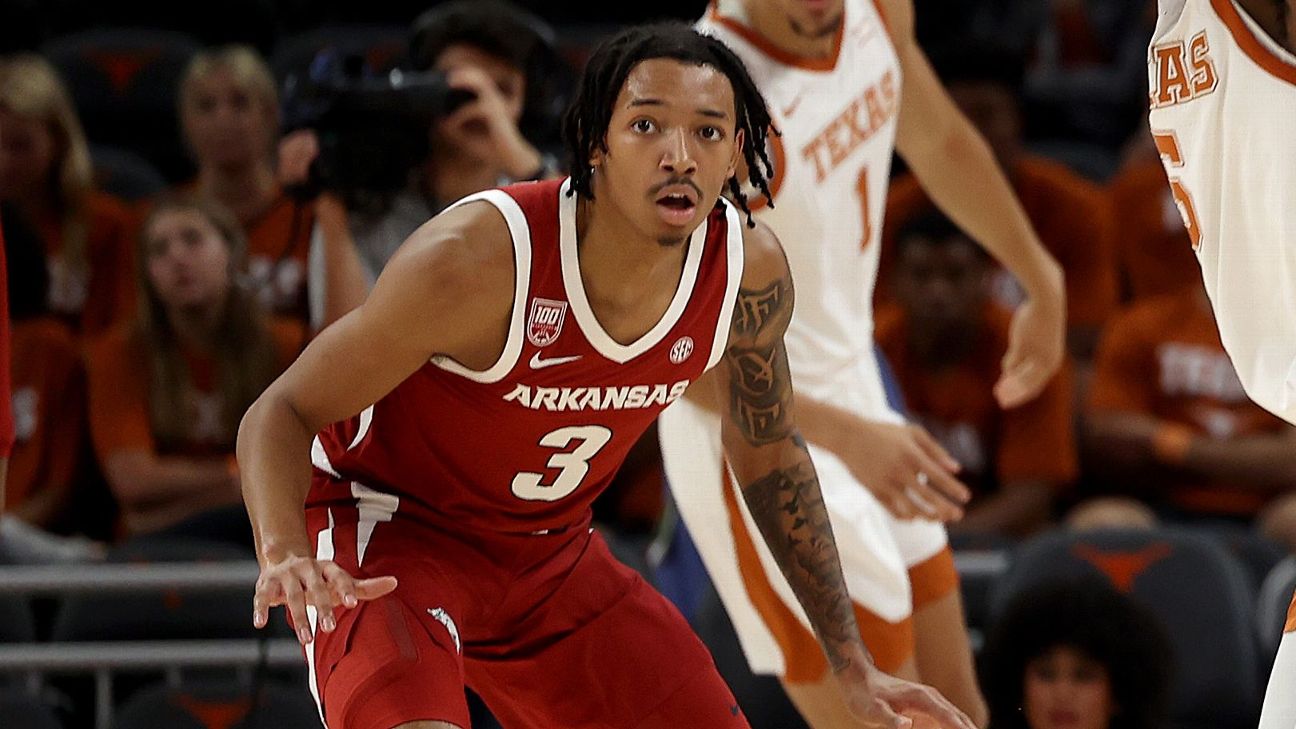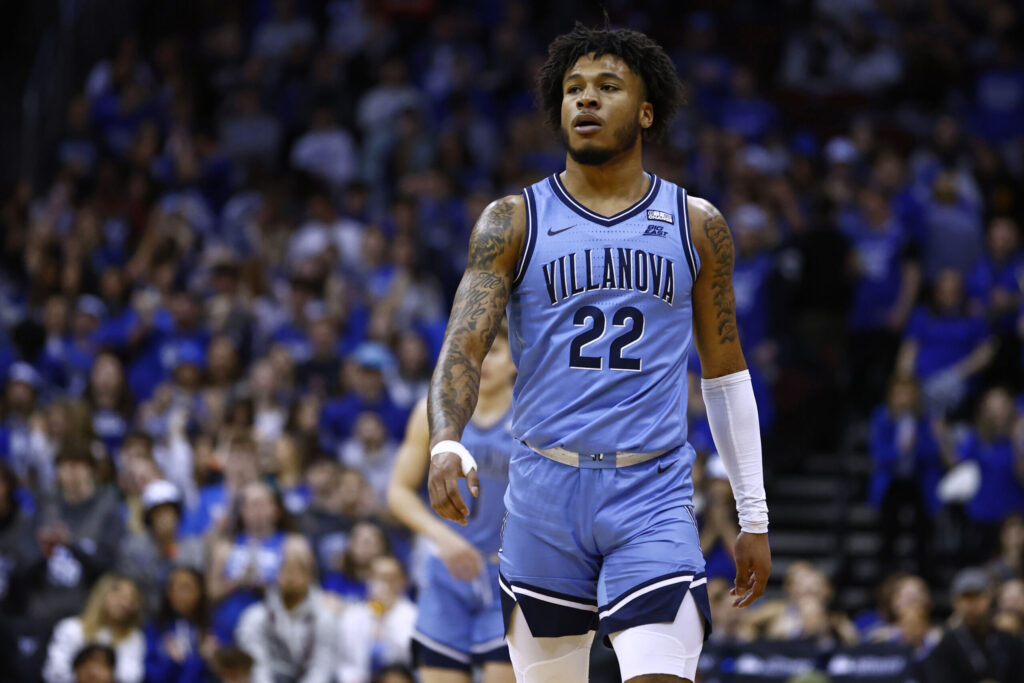The 2023 NBA draft has come and gone, turning many players lifelong dreams into reality. While the narrative was heavily centred around ‘generational talent’ Wembanyama, there were plenty of teams that made shrewd selections, acquiring players that align with organisational needs. Time and time again, we have seen players significantly outperform their projections, resulting in them being labeled as ‘NBA draft steals’; Marc Gasol (pick 48), Draymond (pick 35), Jokic (pick 41) and Siakam (pick 27) are just a few of the recent names that come to mind. With the dust settling, its now time to evaluate what teams have acquired potential draft ‘steals’.
Cam Whitmore (No. 20, Houston Rockets)
If you read any draft related content, you are almost guaranteed to stumble across dialogue involving Whitmore in one of the following forms: ‘common consensus NBA draft steal’ or ‘biggest losers of the NBA draft’. I agree with both sentiments. On a personal front, Whitmore sliding from being a top 8 projected pick has cost him $10M+ over the coming years. At an organisational perspective, the Rockets took a swing on Whitmore at 20, a prospect they were widely acknowledged to be considering taking at #4. This allowed them to pick Amen Thompson, while acquiring Whitmore at #20, a punt you have to take despite reports around potential medical concerns and discipline issues.
“I’ve been overlooked a lot of times in my life, so it didn’t really faze me. I’m just really happy to be in the NBA. I’ve been dreaming about that all my life.”
At 6’7, Whitmore is an elite athlete who shot 40% on catch-and-shoot 3’s on the season. He had a 15.1% turnover rate and had as many games with zero turnovers (7) as he did with 3+ turnovers (8). He showed continuous improvement, especially at the back end of the season – in his last 6 games he had just 4 turnovers (4 games with 0 turnovers), increased his per-game stats to 14/6 and shot 38% from 3pt range, all at just 18 years of age. While there are concerns about his decision making and discipline on defence, under a strong coaching regime (Udoka + co), it is very possible he improves these facets of his game.
In the past, high end prospects like Anthony Edwards and Jaylen Brown had very similar concerns about the translation of their game into the NBA, but had ideal length and athleticism. While I don’t want to directly compare them as prospects, it is good showcase that generally raw talent and athleticism wins over front offices.
Blessing the TL with Cam Whitmore highlights this morning #Rockets pic.twitter.com/vPDBN9zT7T
— Coy 🚀 (@WickedCoy) June 24, 2023
Marcus Sasser (No. 25, Detroit Pistons)
Sasser joins a talented backcourt in Detroit, rounding out their guards of the future alongside Ivey and Cade. A multi-dimensional scorer, Sasser adds much needed shooting to a Detroit team who had the worst FG%, 11th least 3PM and had the 11th worst 3pt% last season. In 2022/23, Sasser averaged 16.8 PPG on efficient shooting, on 43.8%/38.4%/84.8% shooting splits. While there is a backlog of talented guards, his effectiveness off-ball will complement the Pistons nicely, evident in his 3pt catch and shoot percentage, which sat at 40% across his 4-year span at the Cougars. Not only is he an efficient scorer, but Sasser is also an efficient ball-handler. While his career assist average isn’t eye popping, he averaged just 1.4 turnovers per game, enough for a 2:1 assist-to-turnover ratio.
The biggest knocks on Sasser are his below average finishing around the rim and potential defensive liabilities as a 6’1 guard. Inherently, undersized guards are always at a disadvantage defensively, so NBA offensives will likely target him schematically. However, I don’t think he will be at as much of a disadvantage as people are projecting. He has extremely quick feet which allows him to slide well and take the brunt of the contact on his chest. This either slows or completely cuts of the drive, while also allowing him the opportunities to swipe at the ball for steals. This is evident in Sasser averaging 2.2 spg in 2021/22 and 1.6 spg in the 2022/23 season.
Stats will begin to curate a narrative throughout this article and as you’ll soon learn, I love to delve into them – I will note that while all statistical measures have downfall, they are IMO important components of analysis. And with that, statistically, Sasser doesn’t disappoint. He ranks 2nd in Regularised Adjusted Plus Minus (RAPM), 2nd among all draftees in BPM and 8th in EvanMiya’s Bayesian Performance Rating (BPR). The BPR model quantifies how effective a team or player is, using advanced box-score metrics, play-by-play data, and historical information – I like to use it as another advanced metric to accompany the other metrics.
Leonard Miller (No. 33, Minnesota Timberwolves)
Miller was widely projected to be taken in the NBA Draft between 18-22, with some boards even placing him as high as pick 16. So when Miller was still on the board at pick 33, it definitely came as a shock to many. But, as the saying goes, another mans trash is now the Timberwolves treasure. They get a high upside project who has shown offensive flashes and is versatile defender.
At 6’10 with a 7’2 wingspan, he has all the physical characteristics required of an elite on-ball defender. While he hasn’t necessarily reached this point yet, if his fundamentals continue to improve he is well on the way to becoming this prototype. He will have great mentorship alongside elite defenders McDaniels and Gobert and positions the Timberwolves to play a three-headed defensive beast lineup with the 3 on court. On top of this, he is has a fluid handle, is strong attacking the rim and comfortable operating in the midrange. Similar to a few other prospects on this list, his biggest weakness is his 3pt shooting. He shot just 32.7% from three for the G-League Ignite last season, though given he shot 79.2% FT, with a good shooting coach he should improve significantly in this area.
Leonard Miller (#11) has some flashy stuff in his highlights, but sequences like this are what will get him drafted in the 1st round.
Reminds me of Noah Clowney – I think Miller is stronger & quicker, but Clowney is a better shooter. I think both are NBA starters at some point. pic.twitter.com/V7eCggRWrg
— Cooper Hird (@HirdItHereHoops) April 5, 2023
Andre Jackson (No. 36, Milwaukee Bucks)

A key contributor to Uconn’s NCAA championship, Jackson’s athleticism and floor vision will ensure he is a contributor from day one. Statistically, Jackson has huge sleeper potential, ranking 18th in BPM and 14th in RAPM.
The glaring issue with Jackson is the clear hitch in his shot mechanics, which has severely limited his consistency to date. He is coming off a season where he shot just 28.1% from 3pt range, which led to a stretch where opposition teams where implementing game plans encouraging him to shoot. Jackson’s shot will require some fixing for him to become a consistent shooter and offensive threat, however it has meant he has developed strong game awareness and utilised cuts frequently to get himself easier buckets. On a positive note, he did shoot well in a small sample of dribble-pullup 3-pointers over his past two years at UConn, which could translate into his wider three point repertoire with an elite shooting coach.
Jackson is very Draymond Green’esque in the way frequently initiates fast-breaks before actively seeking out shooters. At 6’6, accompanied a freakish speed for his frame (3rd in 3/4 sprint at the combine) effectively makes him a one-man wrecking ball in transition. Importantly, his basketball IQ means he effectively selects when to gamble defense, resulting in Jackson averaging 1.1 steals per game and a healthy amount of transition points.
“I never thought about having captains, until I met Andre and started coaching him, I never really thought about that captain piece… he is a true captain in the sense of somebody who takes that responsibility to heart, a tone-setter”.
Another indication that Jackson could be a NBA draft gem is his 3rd placed ranking in the entire NCAA in EvanMiya’s Bayesian Performance Rating (BPR). This places him ahead of fellow draftees Brandon Miller (3rd), Marcus Sasser (8th), Jarace Walker (12th) and Dereck Lively (20th).
Personally, I think Jackson’s game is more comparable to the likes of Andre Iguodala. Both were impressive athletes (Iggy freak athlete level), who struggled shooting in college, however compensated by being excellent on-ball and off-ball defenders that rebound well and have strong basketball IQ.
Trayce Jackson-Davis (No. 57, Golden State Warriors)
Proclaimed as the NBA draft’s ‘best second-round value’ by a group of anonymous college coaches – what a statement that is, especially for someone with a big chip on their shoulder. TJD is one of the most polished players coming out of the draft, a strong rim runner with soft touch around the rim. This pick is a match made in heaven of sorts, especially given the strongest facets of his game align strongly with the Warriors strengths. TJD has plenty of experience being an additional playmaker, initiating dribble handoffs with guards accompanied by a strong rolling ability.
“He was a guy you could’ve made an argument to take in the first [round]. Second-to-last pick of the draft is a total steal.”
This sets him up well, especially given GSW frequently run dribble handoff actions with Steph and Klay – which should result in a stream of easy baskets when diving to the basket. He is every part a fit for the modern, athletic forward with strong defensive versatility which allows flexibility within the defensive scheme. GSW often run a small ball lineup, one he could easily slot into at the 5 spot, especially given his ability to throw skip passes over defenders and create his own shot down low.
“We think there’s tremendous value [with Jackson-Davis], another guy we had pretty high on our board…….“A little surprised he made it that far, but you’ll take what you can get. He’s been a four-year college player, a proven player, skilled player, can do a lot of things — defend, rebound, finish. I thought his passing really improved over his last year or two in college.” – Mike Dunleavy, GSW GM
The biggest knock on TJD is his apparent inability to shoot as range extends. He attempted just three 3pters in college (0/3), alongside a free throw percentage of just 68%. It is not necessarily something he can’t develop, it is more the fact this component of his game is just unproven at this stage.
Trayce Jackson Davis is going to be the steal of the 2023 NBA Draft. He’s got a very rare combination of Athleticism, Defense, and Passing that you don’t often see from big men. TJD is one of the most NBA ready players in the class and will help a team right away. pic.twitter.com/XeS1WxzxRL
— KJ (@Kjpistons) June 19, 2023
Looking at the stats, it only solidifies the value that the GSW have managed to acquire. TJD ranks 1st out of all drafted prospects in Box Plus Minus (BPM), 5th in Regularized Adjusted Plus-Minus (RAPM) and 40th in EvanMiya’s Bayesian Performance Rating (BPR).
Honourable Mentions
Inherently, not everyone can be a ‘NBA draft steal’, but there are a couple other picks that I gravitate towards in the NBA draft, so thought I should include them here anyway.
Dariq Whitehead (No. 22, Brooklyn Nets)
It’s possible that Whitehead emerges as a serious talent, especially in the context of where he was selected in the draft. A top high school recruit, Whitehead had to undergo surgery which resulted in him missing the start of Duke’s season. Despite this, I think he offers a ton of value, with high upside as a strong 3&D guy. He shot 43% from 3pt range last season (Duke team high), alongside 45.3% on spot-up 3s. At 6’6 with a 6’9 wingspan, Whitehead has the defensive versatility to guard the 1-4, while equally being a threat in the passing lanes. The biggest threat to Whitehead’s development is simply his injury history. If Whitehead can stay injury free, the sky is the limit.
Dariq Whitehead highlights 🎯🎯🎯 pic.twitter.com/Pf85LiIfMt
— brxndon ⚓️ #NetsWorld (@brxndon1206) June 23, 2023
Nick Smith Jr (No. 27, Charlotte Hornets)

Once considered ‘the best NBA prospect in college basketball’ and the No.3 recruit in the ESPN 100 for the 2022 class, injuries plagued his time at Arkansas. Despite this, many analysts projected him to be a late teens to early twenty’s pick – he ended up sliding to pick 27. Primarily a ball dominant scorer, he has strong off-ball tendencies, who got easy opportunities on countless possessions for Arkansas through backdoor cuts. This will be incredibly important in a guard heavy Charlotte team, already boasting the like of Ball, Rozier, Oubre, Bouknight and co. Overall, Smith Jr is an elite level scorer, who has strong body control which allows him to make difficult shots and shoot at a decent clip.
Also a quick plug to Keyontae Johnson, who was drafted pick 50 by OKC; he has an incredible story, persevering through a life-threatening incident and betting on himself to get drafted. And he did.

